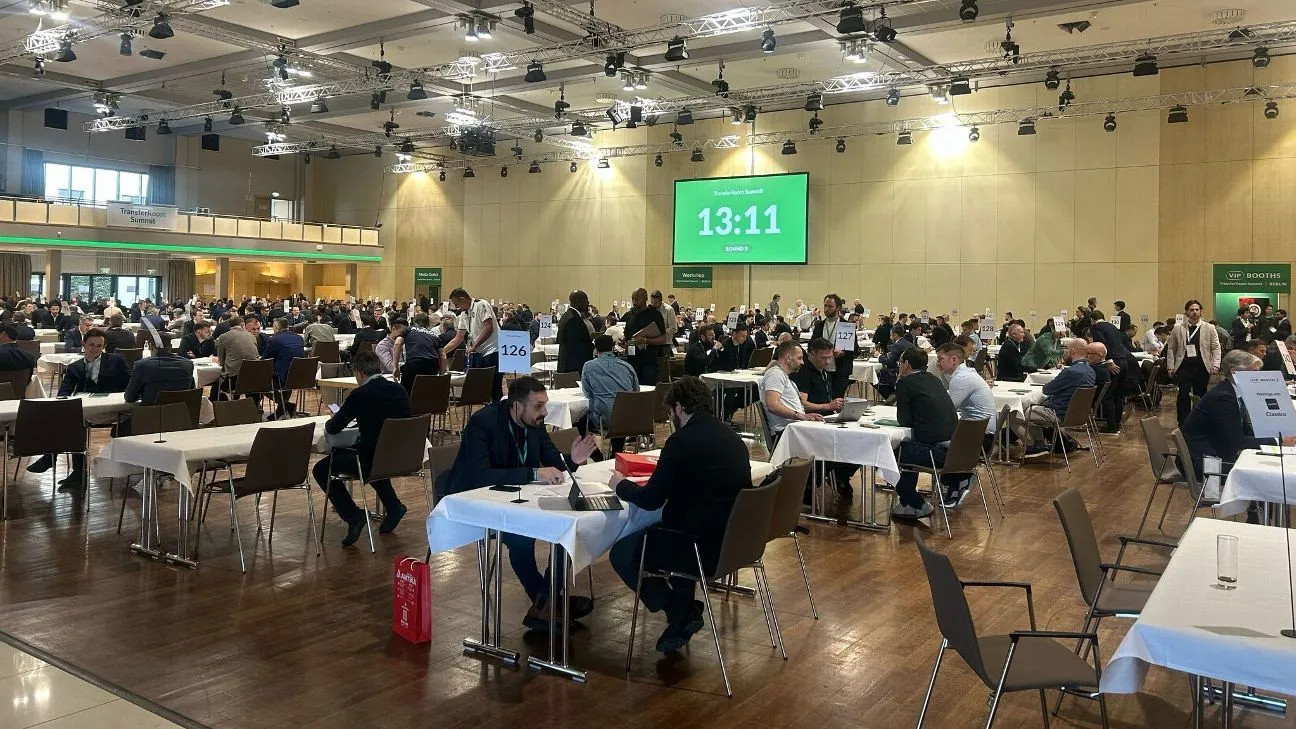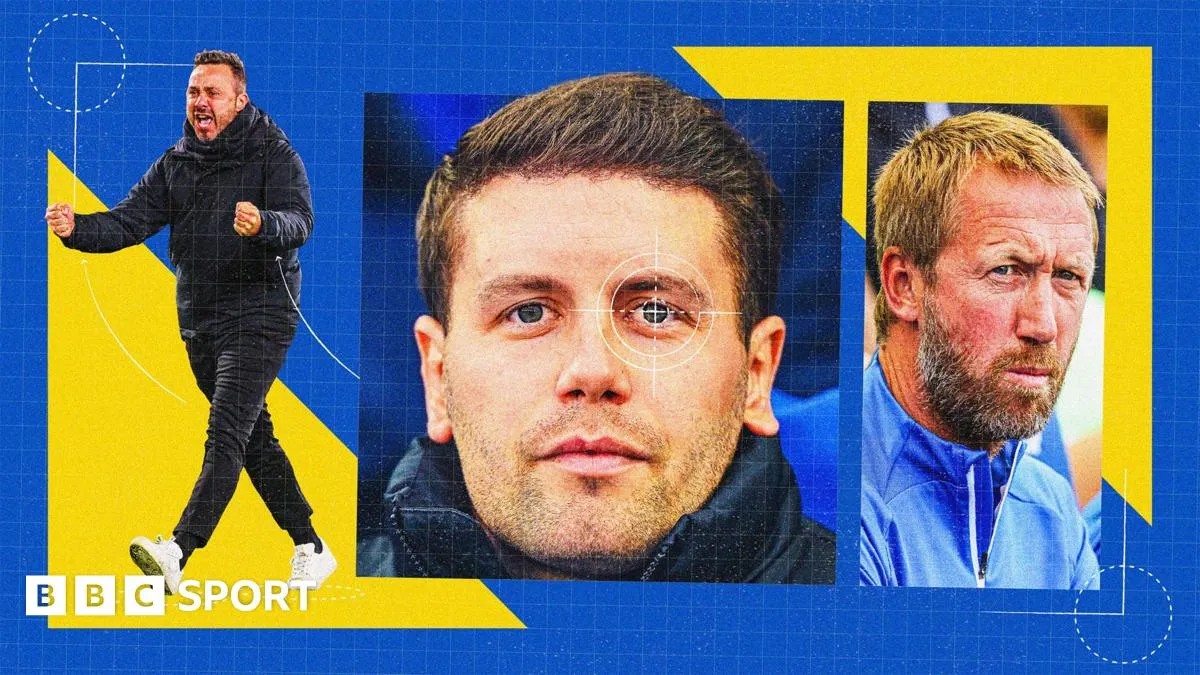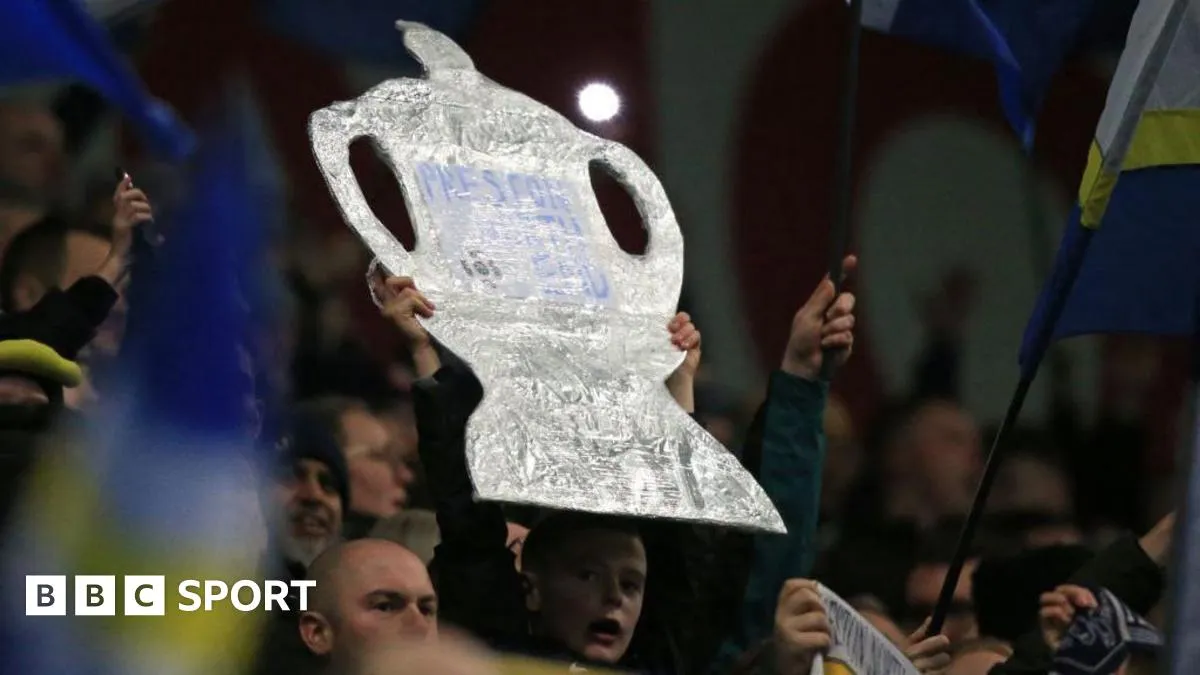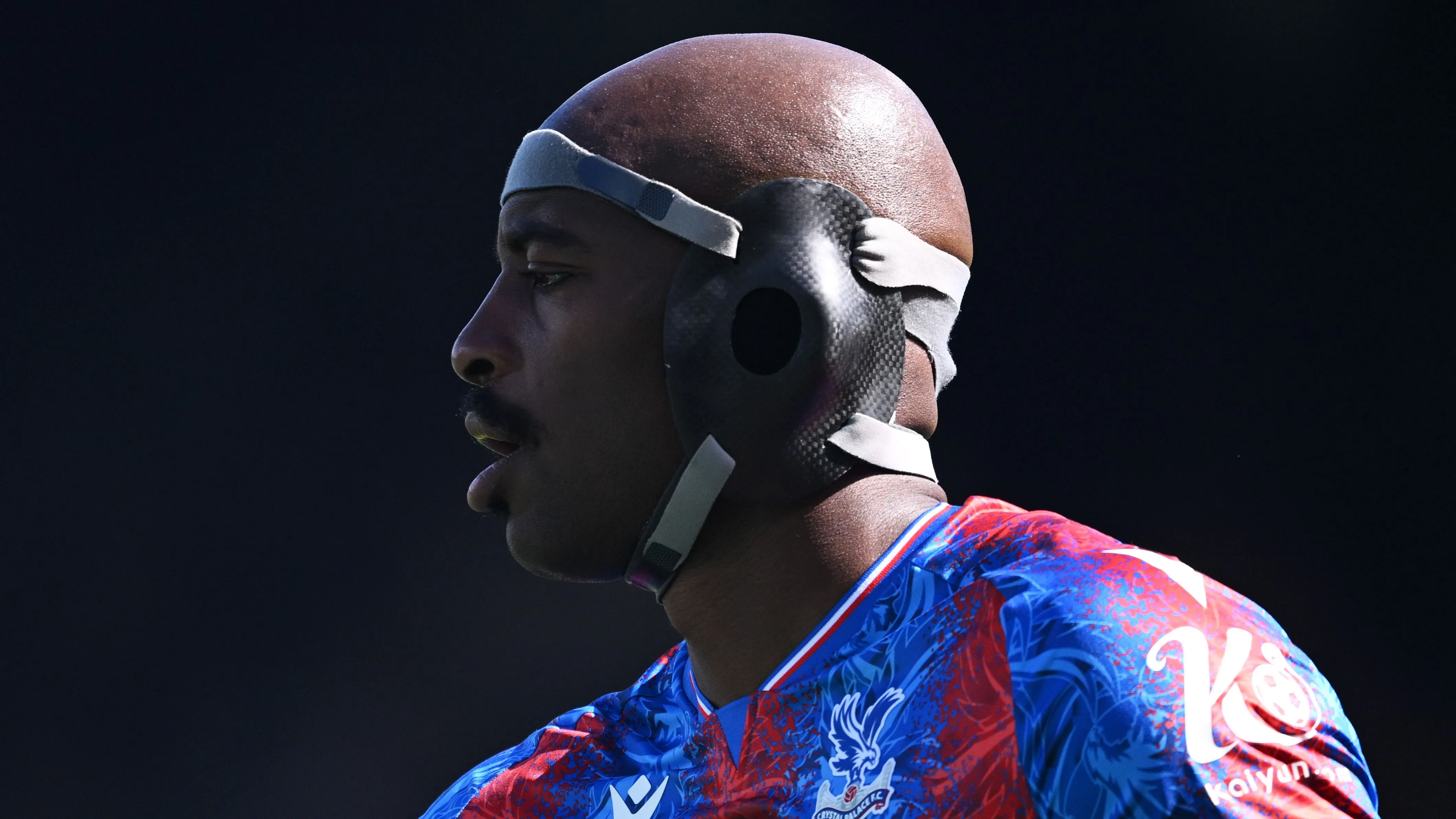
Inside Soccer's Secret Transfer Marketplace: Where Deals Begin and Careers Change
In a spacious room at Berlin's Estrel Hotel, representatives from over 300 soccer clubs and 80 agencies gather with a singular purpose: to discuss player transfers in a series of rapid-fire, 15-minute meetings. "I say to my wife it's like speed dating," explains Luke Sassano, chief scout at Major League Soccer's Nashville SC.
Welcome to TransferRoom, where the global soccer transfer market operates at maximum efficiency. The scene resembles a massive chess tournament, with precisely arranged tables and chairs, a giant digital clock counting down on an overhead screen, and three rings of a bell signaling when it's time to move to the next meeting.
The gathering includes representatives from 12 MLS clubs, 17 Premier League teams (including all "big six" – Manchester United, Manchester City, Chelsea, Arsenal, Liverpool and Tottenham), plus global powerhouses like Ajax, Roma, Juventus, Bayer Leverkusen, RB Leipzig, Sporting CP, and Galatasaray. In total, 303 clubs from 73 leagues across 47 countries converge in a single room.
"There's a lot of important information being exchanged before the transfer window," explains Simon Ankersen, TransferRoom's director of football relations, as he observes the flurry of activity below from a balcony.
A scout from a top-six Premier League club emphasizes the value: "We can meet with clubs from around the world in one room. Part of it is the formal meetings, but also having coffee, catching up, getting some information and making new contacts that could lead to something in the future."
TransferRoom began in 2017 as an online platform inspired by real estate marketplaces like Zillow and Rightmove, designed to help recruitment teams quickly identify available players and understand other clubs' needs. "We realised very quickly it was a very relationship-driven industry and the face-to-face meetings are extremely valuable," says Ankersen. From modest beginnings with roughly 50 clubs at a London event in 2018, the concept has grown exponentially.
"In the past we saw that a lot of clubs were struggling in the transfer market, primarily because of a lack of transparency and a lack of market access," Ankersen continues. "Selling clubs didn't know what positions buying clubs were looking for, what their budget was, who to speak to at the club. They were relying on their own networks and having to rely on intermediaries. Buying clubs didn't know which players were available, to buy or to loan, how much it was going to cost, who was the player's agent."
The Berlin summit is structured around six hours of meetings—three hours each across two days—with nearly 3,500 formal meetings scheduled. Nashville's Sassano, who arrived from the U.S. just hours before his first meeting, expects to hold around 30 formal discussions during his stay. When combined with informal networking over coffee, beer, and wine, he estimates his total interactions could approach 100.
For FC Tokyo general manager Mitsushiro Obara, who traveled more than 5,000 miles to attend, the journey is worthwhile when considering the alternative of meeting counterparts individually. "By coming here, we can get a lot of access at one time from many different sources," Obara explains. "That's where we see the main value. Just speaking geographically, Japan is far away and it limits our access to information. This event breaks down barriers and opens up communication with clubs we wouldn't normally have the opportunity to meet."
Orlando SC general manager Luiz Muzzi echoes this sentiment: "There are a lot of good connections here. Sometimes you can get a deal done, sometimes not, but you make the connection and you end up doing something later on. Making connections is how you get things done. It opens up new chances to speak to clubs you otherwise wouldn't get to talk to. Maybe it's Turkey or Slovakia or Japan. We wouldn't get a chance to talk to those guys on a daily basis."
While deals aren't typically finalized at TransferRoom, many significant transfers begin here. Viktor Gyökeres' move from Coventry City to Sporting CP in 2023 started when Hugo Viana contacted Coventry through TransferRoom before arranging in-person discussions with the striker's agency. Since his transfer to Portugal, Gyökeres has scored an impressive 83 goals in 91 games and is linked with another major transfer this summer.
Other transfers initiated at TransferRoom include Antoine Semenyo's move from Bristol City to Bournemouth and U.S. international Daryl Dike's switch from Orlando City to West Bromwich Albion. Over the past eight years, more than 6,500 transfers have been facilitated through the platform or face-to-face summits.
Major Premier League clubs primarily use these events to generate interest in players they want to sell or to find development opportunities for younger talent. Loan moves like Will Dickson's from Manchester City to Motherwell and Amar Fatah's from Troyes to Willem II were both arranged following TransferRoom conversations.
"For the biggest Premier League clubs, it's probably stronger for loans," notes a scout from a top-six Premier League club. "We can meet clubs where he could potentially place a young player. We primarily use TransferRoom for that. Since the pandemic, Zoom and Microsoft Teams have become a lot more popular, but we still like to get in front of people. Shake their hand, see their body language. It's the best way."
With each 15-minute meeting, a bell rings when one minute remains, signaling that it's almost time to move to the next table. "Every meeting is different," a Premier League recruitment specialist explains. "Our conversations are mostly about what profiles and positions we'll be looking for in the next window and beyond. Another part is to meet people in different regions where we might not have many contacts. The first 60 seconds sets the tone. You know then whether you're going to get something out of it."
For teams like Stockport County, currently in England's League One playoff positions, these meetings require additional planning. "We're working to multiple scenarios," says Dale Hagen, Stockport's first team scouting operations manager. "We're looking at multiple lists, so a League One list and a Championship list. Some players fit on both lists, some don't. This is the work we're doing in February, March and April so when May hits and you've got your brief for the season ahead, you can then act on your list because your due diligence has been done. I can go home and update on around 70 or 80 players."
While roughly 80% of attendees represent clubs, agencies form the remainder. For them, the goal is straightforward: pitch players. "Because it's March, we already know which players are going to be out of contract and which players are potentially looking to move," explains Brendan Lever, data and transfer analyst at SEG. "I have a list of around 80 to 100 players, and then I try to plan meetings based on these players, the quality of the players, the expected transfer fees. Everything."
SEG represents notable figures like Rasmus Hojlund, Cody Gakpo, and Erik ten Hag. Their preparation focuses on targeting appropriate clubs for their available talent. "It doesn't make sense to meet with clubs in certain countries if we only have available players who are going to cost £10m because they can't afford that," Lever notes.
Paolo Sardo, general manager of P&P Sport Management, describes his approach: "Usually in the meetings, I'm asking what is the situation of the club. It's really important to know the coach, the system of play, the squad. We know our players very well and we want our players to show all their potential in the right situation."
The work continues after the summit concludes. "Usually after the summit it takes a few days to send all the players through and then a sporting director will pass the lists to his scouts," Lever says. "We have a big network (around 130 agents), but it's about maximising it. If a player gets one or two offers or he gets four or five, that's a much better choice."
Even agents without formal access make the journey, hoping to catch decision-makers in the hotel lobby. "I'm here without a pass," one agent confides. "I won't get 15 minutes, but I might get 10 seconds to mention a player or swap numbers. Sometimes that's all it takes to get something started."
The TransferRoom calendar continues with summits in Buenos Aires in June and Madrid in early August—the latter strategically timed during the summer transfer window as a "deal day" when discussions focus on finalizing transfers before European deadlines.
"Recruitment is the area of a club that can make the most money, but it can also cost you the most money," Hagen observes.
As the final meetings conclude, a sporting director from a Swiss top-flight club discusses a promising player with a Premier League recruitment team member. They're exploring whether the player's profile matches what the English club seeks, with the Swiss team hoping to secure a profitable transfer to one of Europe's elite leagues.
While SEG's Lever expects "99%" of conversations to yield nothing concrete, occasionally these brief encounters spark significant deals. "It can happen very quickly. We've had some deals in the past like Mark Flekken, the Brentford goalkeeper, that started at a TransferRoom summit. That was a big deal for us and great for him to get to the Premier League. The seed of that started at a summit, but then there's so much work to do after. Everyone has to agree—the clubs, the player, the agent. It's about planting seeds everywhere."










